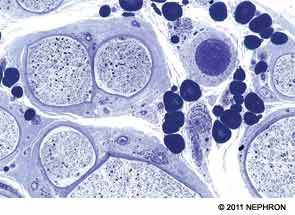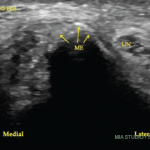
MADRID—Assessing whether patients with rheumatic diseases have peripheral neuropathy—and determining the right treatment course—can a somewhat complicated process, but it can be a key part of a patient’s overall care, experts said here at the European League Against Rheumatism (EULAR) 2013 Annual European Congress of Rheumatology, held June 12–15.
Peripheral neuropathy is common in patients with a rheumatic disease, and addressing these concerns involves answering several questions, said Yvonne Lee, MD, assistant professor of medicine at Harvard Medical School in Boston.
First, does the patient actually have a peripheral neuropathy? Which tests should be done to determine this? How should they be interpreted? Finally, if the patient does have a peripheral neuropathy, is it because of the rheumatic disease, medications, or is it just coincidental?
Diagnosis
The diagnostic approach involves discerning a nervous system abnormality from conditions with similar symptoms (e.g., myopathies) and distinguishing a peripheral neuropathy from a central nervous system disease.
Neuropathy can be categorized as mononeuropathy or mononeuritis multiplex (focal or multifocal involvement of one or more nerve trunks, due mostly to entrapment or vasculitis, and with acute or subacute onset); polyneuropathy (symmetrically distributed, often distally distributed, and with gradual onset); or polyradiculoneuropathy (diffuse involvement and usually inflammatory in origin).
Initial diagnostic methods usually involve laboratory testing, including a complete blood count, creatinine, liver enzymes, fasting glucose level, and erythrocyte sedimentation rate.
Physicians can then turn to electrodiagnostic studies to confirm a diagnosis of peripheral neuropathy, assess the extent of it, determine whether it is axonal or demyelinating, and assess its severity, Dr. Lee said.
Nerve biopsy, she said, can help in diagnosing an inflammatory neuropathy, especially to demonstrate vasculitis, but shouldn’t be done before adequate clinical, laboratory, and electrophysiologic studies have been done.1 Results are often nonspecific, and complications, such as sensory loss and/or unpleasant abnormal sensations, are common.2
Common types of neuropathy seen in patients with rheumatic diseases include entrapment neuropathy, such as carpal tunnel and ulnar nerve entrapment; inflammatory neuropathies, such as Sjögren’s syndrome, systemic vasculitides, and systemic lupus erythematosus (SLE); and small-fiber neuropathy. Although originally linked mainly with diabetes, small-fiber neuropathy has also been reported in association with SLE, rheumatoid arthritis, sarcoidosis, and celiac disease.
Medication-induced neuropathies also should also be included in the differential diagnosis, Dr. Lee said. Patients at risk for a leflunomide-induced neuropathy include the elderly, diabetics, those on neurotoxic drugs, and those with risk factors such as alcoholism and renal impairment.



